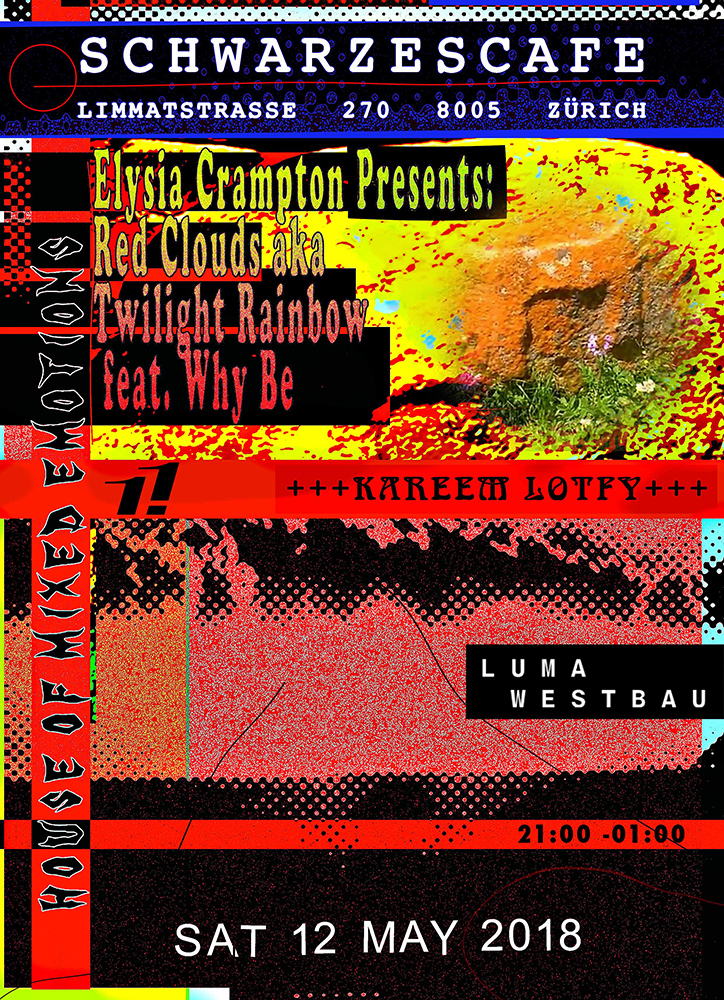12.05.18:
1.1 x H.O.M.E.:
Red Clouds – Elysia Crampton
feat. Why Be
at schwarzescafé, Zurich

12.05.18: 1.1 x H.O.M.E.: Red Clouds – Elysia Crampton feat. Why Be
Elysia Crampton presents:
Red Clouds aka Twilight Rainbow
feat. Why Be
hosted by 1.1 x House Of Mixed Emotions
at schwarzescafé, Zurich
Elysia Crampton’s eclectic and unrestrained electronic music is the flashpoint of a myriad influences opening upon the complexity and multifacetedness of Aymara becoming. Underscored by radical and queer politics, Crampton’s experimental work gives sonorous form to contemporary expressions of Aymara resistance and survival: a project of “becoming-with,” in the shades given this term by Donna Haraway via prison abolitionist Che Gossett.
Elysia Crampton’s self-titled new album, out on April 27th 2018, marks her 4th official release. The Amerindian musician draws on various Andean styles such as kullawada,huayño, tarqueada, quirqui/tundique, khantus, & morenada, together with genres like metal, psychedelic & jazz fusion, to tell a story of her movement in the world – performing her history, both sonically & corporeally, as a means to gain economic access & agency.
Red Clouds collaborator Tobias Lee aka Why Be is a Korean-born, Danish-raised, and Berlin based producer and DJ. His 2015 Halcyon Veil release ‚SNIPESTREET’ establishing himself as a formidable emergent voice in dance music’s larger conversation. Unlike a lot of his peers who make contemporary club music that is unbound by genre, Lee’s wide-ranging referentiality isn’t absorbed into a streamlined product, in which culturally specific sounds lose their unique character in carefree, pop-aesthetic, musical globetrotting. Instead, he cut-and-sticks different sounds and scenes together in a way that highlights their dislocation, with bumpy, not-quite-right transitions or uncomfortable sonic disjunctures.
